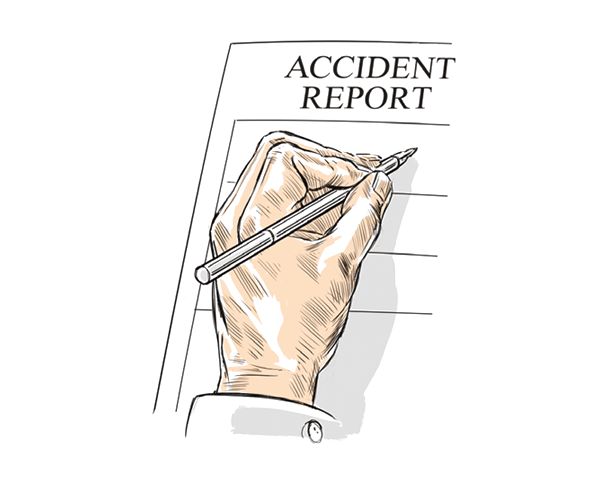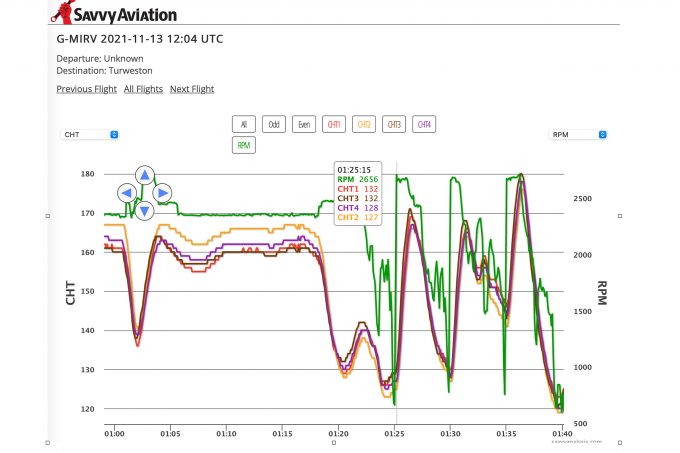Limbo attempt
Rollason Druine D.31 Turbulent
G-ARGZ
Damyns Hall Aerodrome, Upminster, Essex
Injuries: One serious
The display team were conducting a regular training session with three new pilots who were completing their introductory training. As the weather was benign, as well as practicing some formation elements, the display leader decided to introduce the new pilots to the ‘limbo’ element of the display.
The limbo manoeuvre involves flying the aircraft below a string of bunting suspended approx 20ft above the ground between two poles. He described that, for this first practice, the aircraft should descend from at least 500ft aal flying in a straight line towards the limbo gate aiming to achieve approx 90kt as the aircraft reaches the gate. Full power should be applied just prior to the gate, if not already applied, ready for the climb. It was emphasised that pilots should not approach the limbo gate at low level over an extended distance. The minimum height of five feet should be achieved just short of the gate with sufficient lead-in to achieve stable level flight. Once through the gate, a straight climb was to be initiated back to 500ft prior to entering the circuit.
“The aircraft pitched down and hit the ground. As it did so the wings folded upwards… ”
To enable the new pilots to experience the limbo procedure each of them observed three existing pilots flying the manoeuvre from the ground. Two of the new pilots (in the second and third position), the display leader and a fourth experienced pilot then took off in the four Turbulent aircraft for a practice formation flight away from the airfield. As briefed, when they returned to the airfield, they practiced the limbo manoeuvre. Shortly thereafter, the second flight commenced with formation practice away from the airfield as before. On return to the airfield the team planned to conduct two passes through the limbo gate as they had done on the first flight. The first two aircraft passed through the limbo gate without incident. However, as the third aircraft approached the gate it was seen to pitch down and hit the ground. As it did so the wings folded upwards and the aircraft came to rest inverted approx 80 metres past the limbo poles. The pilot was helped from the aircraft and taken to hospital. He had suffered a serious head injury and other injuries. He was released from hospital after 72 hours.
It is likely that the pilot thought he was slightly high as he approached the limbo gate and instinctively pitched down. The aircraft probably struck the ground before he had time to realise the effect of the pitch input.
Comment I have some experience at limbo flying and I know it’s difficult to override the reflex to bunt hard when a bird looms large in the windscreen. Trying to protect one’s head as the limbo tape races towards you would instil the same response, except here the ground got in the way. The Team has revised its training to deliver a more ‘progressive’ approach. A leap of faith?
Bit rusty…
Zenair Zenith CH701
N396PH
Marion, Virginia
Injuries: None
The pilot, who was 91, reported that he had purchased the aeroplane three months earlier with the intent of obtaining his sport pilot certificate, and had flown it to his home airfield.
He stated that, on the day of the accident, he decided to fly the aircraft around a nearby airport traffic pattern ‘to see how it did’. The accident flight was his second flight in the aeroplane. While landing, the aeroplane descended rapidly from about 15ft, landed hard, and bounced.
The pilot applied full throttle, however, as the aeroplane climbed through about 20ft, it dropped rapidly a second time and landed hard. The right main landing gear wheel assembly separated, and the aeroplane veered to the right before it came to rest upright on the edge of the runway. The fuselage and left wing were substantially damaged.
The pilot reported that he began learning to fly in 2001 and accumulated about 60 total hours of flight experience. He did not complete his training, nor had he flown an aeroplane since that time, until he purchased the accident aeroplane.
The circumstances of the accident are consistent with the pilot’s failure to maintain control during a bounced landing.
Comment Interestingly, in the hand-written accident report, the pilot casts doubt on the suitability of the aircraft design. Unsurprisingly, the investigation didn’t come to that conclusion. Taking an aircraft airborne when unqualified and having not flown for 20-odd years is crazy enough even without, at 91 years old, one’s reflexes being less sharp.
Dripped out
American Aviation AA1, Yankee
N9218L
Warthen, Georgia
Injuries: Two minor
The commercial pilot reported that, on the day of the accident, he filled each tank of the newly purchased American Aviation AA1 aircraft with 12.5 gallons of fuel. On his first flight, after about 20 minutes of flying, he noticed he was running out of fuel.
The pilot thought the fuel burn was very high and decided to land at the nearest airport, which he did, and added about 24 gallons of fuel. After departure, and about 30 minutes of flying, he again noticed that the aeroplane was running out of fuel. He planned to land at the nearest airport.
However, about 15 miles away from the airport, the engine lost total power. The pilot switched fuel tanks and turned on the electric boost pump, and the engine restarted. A few minutes later, the engine lost total power again. The pilot noticed both fuel tanks were out of fuel. During a forced landing in a field, the airframe was substantially damaged.
Post-accident examination of the engine revealed that the carburettor float bowl plug was missing, which allowed fuel to leak out of the carburettor. Therefore, the aeroplane’s fuel consumption during the flight would have increased substantially and likely resulted in exhaustion of the aeroplane’s available fuel supply at a greater-than-normal rate. Although the pilot reported that the aeroplane was recently inspected before he purchased it, no maintenance records were available for review, so the scope of work done to, or inspections of, the carburettor could not be determined.
Comment This could easily have made it into this month’s analysis piece as it shows how we rely heavily on noticing things ‘out of the ordinary’ and which, in the case of a recently acquired aeroplane, is often difficult to achieve. Unfortunately, the pilot managed to persuade himself that there was nothing wrong with his fuel system when, clearly, there was.
Conspiracy theory…?
Champion 7ECA
N2561G
Pembroke Pines, Florida
Injuries: Two serious
During a training flight, the pilot receiving instruction ‘froze on the controls’ during a demonstration of a power-off stall. He did not respond to the flight instructor’s commands to release the controls, and the instructor was unable to overpower the pilot’s control inputs. The aeroplane remained in a stall condition, descended, impacted marshland, and sustained substantial damage to the wings and forward fuselage.
The aeroplane’s altitude at the start of the descent was not captured by radar data, however, the aeroplane had previously been flying at altitudes of 100 to 500ft amsl in the practice area about 1.5 minutes before radar altitude data was lost.
Comment It is difficult to get one’s head around this particular accident as there seem to be too many imponderables. A sure-fire takeaway though is that teaching or demonstrating stalls at low-level doesn’t feature in the playbook of most instructors!
A mystery…
Cessna 177
N29516
Elkhart, Indianna
Injuries: None
The pilot pre-flighted the aeroplane for a flight with two passengers.
The passengers sat in the aeroplane with their seatbelts secured when the pilot lowered the propeller blade by manually ‘smacking it down’ in a clockwise direction. The engine started, and the aeroplane began to move forward under its own power.
“The pilot attempted to board the aeroplane while it was rolling”
The pilot attempted to board the aeroplane while it was rolling but was unable to do so. The aeroplane travelled across a ramp area, through a grassy area, over a taxiway, and up a slight incline where it became airborne momentarily before it came to rest in a field.
The aeroplane sustained substantial damage. Post-accident examination of the aeroplane found the mixture and throttle in the full-forward position and the ignition key removed from the ignition. The key’s position before the accident could not be confirmed.
When the pilot rotated the propeller an inadvertent engine start occurred. The reason for the inadvertent start could not be determined based on available evidence.
Comment ‘Heavens to Murgatroyd, Batman…’. This may be a misquote, but I am pretty sure we now have two traumatised passengers who will never take to the air again! I will leave the sleuths among you to come up with a possible cause!







